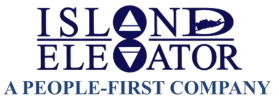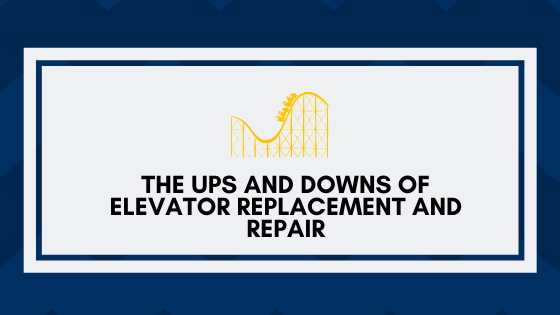The Ups and Downs of Elevator Replacement and Repair

Here is a guide to projects for elevator replacement and repair.
The odds of getting stuck in an elevator is 1 in 5000 if you use it daily. Getting stuck in an elevator can be a nightmare. If your building runs an elevator, you have a responsibility to ensure users’ safety every day.
US government oversight on elevator maintenance is relatively strict. Non-compliance with the department of buildings could land you in trouble. The policies cover elevator repairs, maintenance, use, and inspection personnel.
The number one reason for elevator accidents is human error. It’s the fault of the person operating it or riding in it. Keep reading to learn about the ups and downs of elevator replacement and repair.

Common Elevator Problems
On average, 325 million people use elevators globally. This makes elevators seem like they are self-sufficient with minimal to no maintenance. This is simply not true.
Elevators are susceptible to numerous problems, especially with poor maintenance. Here are some of the common problems
Worn Sheaves
Elevators use sheaves of cable to make the cars rise and fall. Without these, elevators would be very difficult to operate. When sheaves wear down, they cause problems with the elevator’s performance.
Sheaves run on a track and have to be strong enough to withstand high tension. If they don’t work properly, the elevator can stop in between floors. Alternatively, the elevator could move at an accelerated rate.
A worn sheave is a serious maintenance problem in a hoistway. It causes intermittent failures of the hoistway door. It can even cause a carriage to fall.
The sheave most frequently worn is the bottom one on the down side. It gets the most use and wears out before the top sheave. Worn sheaves are often not diagnosed correctly by first-line service personnel.
Power Failure
Elevator power failure is a common occurrence caused by numerous factors.
One of the most vulnerable parts of elevators is the gearbox. This converts electrical power into rotational power to drive the elevator car.
The gearbox’s components are subjected to high levels of stress and pressure. That’s why it often fails. Other common reasons for elevator power failure include:
- Inadequate maintenance
- Faulty wiring
- Overloading
- Water damage
- Vandalism
Overloading elevator carrying capacity is a common cause of elevator power failure. Weight determines the amount of power required to move the elevator.
Wiring problems can be caused by improper installation and age. Also, electrical surges caused by lightning strikes can cause power failure. While this doesn’t happen often, it does happen.
To avoid these problems, service your elevator regularly. Communicate with your elevator contractors in case of such problems.
Bearing Malfunction
Elevator bearings bear the load and protect the elevator from wear and tear. They provide support to moving parts. Different types of bearings are required for elevator movement.
However, they all share common features like a ball, roller, or cage. The problem with elevator bearings is that they are exposed to the elements. They are subject to wear and tear.
Elevator bearings wear out over time because they can be subject to a variety of forces. This includes friction, temperature changes, wind, and vibration. It takes one misalignment or a single defect to ensure that your elevator will fail.
Elevator bearings are installed on the top and bottom of each car of an elevator. This makes them susceptible to damage. They can be damaged if not installed properly – either missed or hit by another part.
This can lead to wear and tear or even damage other parts of the elevator.

Contamination
Elevator oil provides lubrication for motors, cables, and other elements of an elevator. It also acts as a dust repellent. This keeps the insides of an elevator clean and free from dust build-up.
Elevator oil is composed of hydraulic fluids and mineral spirits. The hydraulic fluids in an elevator oil are made from synthetic hydrocarbons to prevent contamination.
Elevator oil contamination is a common phenomenon. It causes elevator malfunctioning and breakdowns. Most times, it is caused by improper handling and storage of the lubricants.
Other causes of oil contamination include worn seals or parts. Wear releases small metal particles in the oil, which affects an elevator’s functionality.
To avoid oil contamination, regularly change the elevator oil and filter. This helps prevent contaminants from entering the elevator oil and bearings. Oil pressure is a key indicator of the health of your elevator.
Regularly check your oil pressure gauge so it is within an acceptable range.
Misaligned Motor Drive
Every elevator has a motor that makes it move. The motor is connected to a drive system, which turns the motor.
The process is very simple in theory. However, it can be quite complex in reality because of the misalignment of the two components. This misalignment can result in malfunctioning of the elevator.
The causes of misaligned motor drive of an elevator include:
- Elevator tilting forward or backward due to uneven flooring
- Faulty positioning of the track wheels on the rails
- Motor control board or drive board is not set properly
- The sensors are not aligned properly
- Loose connection of the wires on the motor control board
- Worn out bearings and bushings of the elevator
Call for elevator repair service in case of a misaligned motor drive. If your elevator has a misaligned motor board, replace the entire motor board. If a specific piece of the motor board is broken, replace that piece.
Make sure to purchase the same brand and model that was in the elevator previously.

Elevator Maintenance Tips
The elevator is one of the most vital parts of a commercial building. It’s also one of the most often overlooked. Most people take elevators for granted and only pay attention when they break down.
Don’t wait for an incident to try these elevator maintenance tips to promote safety.
Conduct Daily Inspections
Most daily elevator inspections are done haphazardly. Some property managers will do their elevator inspection once a month.
Others do it every three months. Neither of these methods is good enough. Daily inspections are a necessity.
Here are things to inspect daily:
- Elevator Doors
Inspect the door of the elevator; it should open and close with ease. If there is any issue, call your building maintenance company immediately.
- Door Sensors
The door sensors tell the elevator if the doors are open or closed. If the door sensors are not working, the elevator will not move. Get into the car and press a button that says “door open” or “door close.”
- Traction Locks
These are located on the side of the elevator car and should be checked daily. They are designed to keep the elevator from moving if the door is open.
- Car Position Indicator
This tells the elevator where it is in the shaft. If this is not working, the elevator will not move.

Schedule Regular Maintenance
The average lifespan of an elevator is 25 years. Most elevators are replaced before they reach the end of their lifespan.
Many times, elevator owners fail to conduct routine maintenance and repairs, resulting in breakdowns and a high cost for replacement.
How often should you plan for maintenance? The answer depends on the building’s elevator usage. If an elevator travels 10,000 miles a year, schedule maintenance annually.
Most elevators have a schedule that calls for a full inspection every 1-2 years. Consider minor repairs every six months.
Elevators should be serviced by a professional licensed to do so. They know what to look for and how to keep your elevator running at optimal level. Government oversight makes it a legal requirement that only qualified personnel must inspect and maintain an elevator.
Change Oil Regularly
Elevator oil is one of the most important aspects of a working elevator. The proper interval for changing elevator oil is simply once a year. That doesn’t mean you just replace it once a year.
You should also test it to ensure there aren’t any other issues with the machine.
If your elevator oil is getting old, it’s time to replace it. Elevator oil has a shelf life of about 12 months. After that, the properties of the oil change.

Don’t Service Your Elevators to Avoid Government Oversight; Do It For Safety
Government oversight on elevator installation and maintenance is a valuable asset. However, effective maintenance of your elevators should be a personal responsibility. Don’t wait until people are stuck or for a major incident.
Talking to elevator contractors for repair and maintenance should be a regular routine.

Find Out Your Elevator Repair Service Cost Today
In the end, the truth is that no matter the elevator repair service cost, you need to keep your elevator maintained for it to be safe to use. It doesn’t matter if you need your doors repaired or the jacks. An unmaintained elevator is dangerous to anyone who uses it.That’s why you should partner with an elevator repair service you can trust.

Island Elevator is Ready to Help!
Island Elevator is here to help you understand all facets of your Elevator Repair, Maintenance, & Modernization costs in the new year. Our team is here to help ensure your home and business vertical transportation equipment receive the regularly scheduled maintenance necessary to help you avoid a major catastrophe, reduce the possibility of a costly repair, and ensure the safety of your passengers, tenants, and family.

